Prof.He Heyong: the Application of Solid-state NMR in Heterogeneous Catalysis
2020-03-10
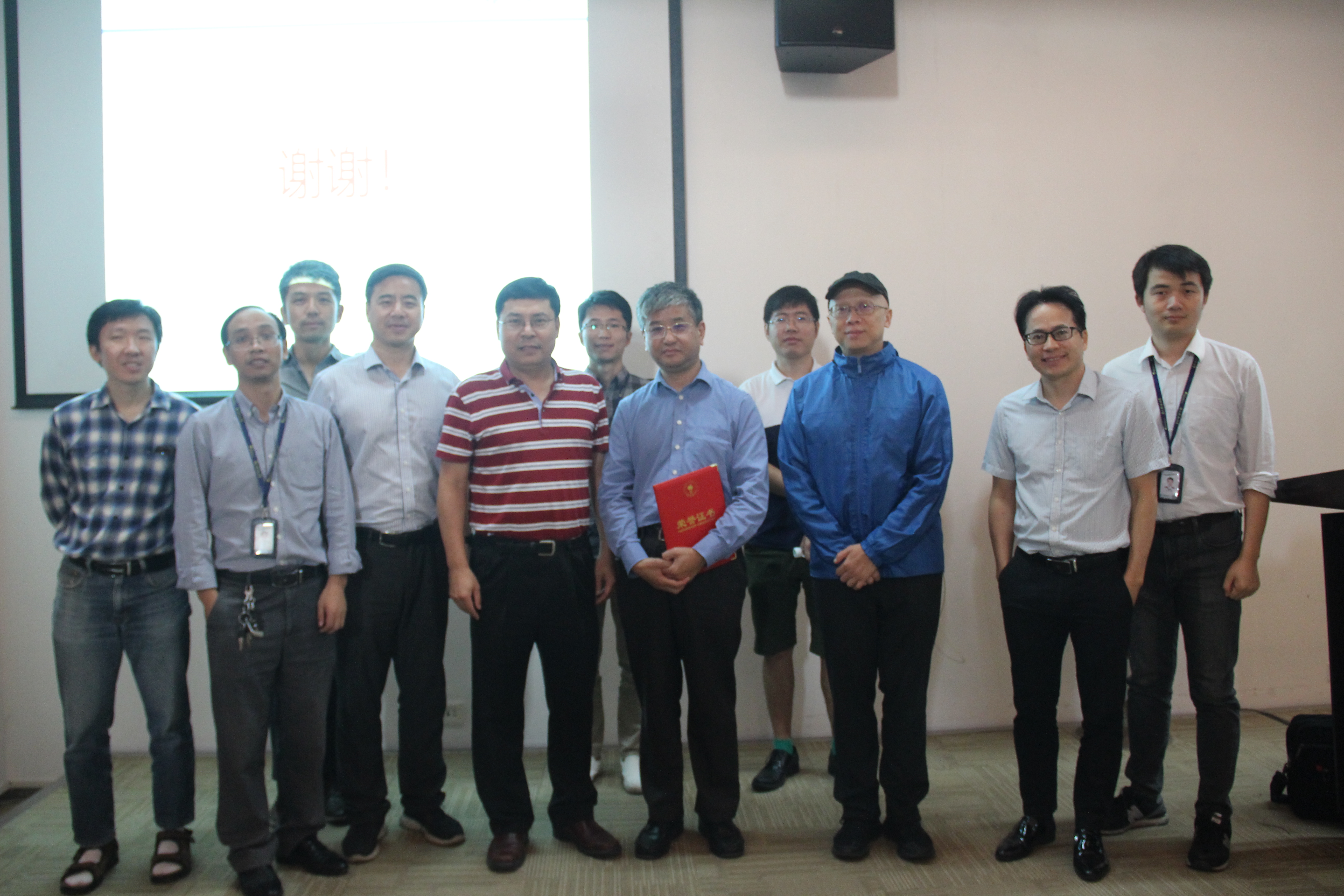
Science Lecture Series
On the afternoon of November 7, 2019, Professor He Heyong, Head of the Department of Chemistry of Fudan University, was invited to come to SUSTech and attend the 24th Science Lectureof the College of Sciences, giving our teachers and students a wonderful academic report themed "Application of solid-state NMR in heterogeneous catalysis" in Room 110, the Lecture Hall of School Library. This lecture was chaired by Professor Huang Limin from the Department of Chemistry of the College of Sciences.
Guest Introduction
He Heyong gained the Bachelor of Science in the College of Chemistry in Fudan University (1980-1984) and then acted as the assistant professor of the College of Chemistry in Fudan University (1984-1989). He went to the the Department of Chemistry of Imperial College London as a visiting scholar (1989--1990). After receiving his PhD degree from Cambridge University (1990--1993), he worked in the Department of Chemistry at Cambridge University as the director of solid-state Nuclear Magnetic Resonance Laboratory from 1993 to 1997. From 1997 to 2000, he was a Principal Scientist in the Leverhulme Centre for Innovative Catalysis at University of Liverpool.
He returned to Fudan University as a full professor of physical chemistry from 2000 and was awarded the Yangtze River Scholar of Ministry of Education and the Distinguished Young Scholar of the National Science Foundation of China in 2000. His research is mainly focused on the heterogeneous catalysis and solid-state nuclear magnetic resonance. He has more than 310 papers with over 11000 citations. He has served on the chemistry group of the 6th and 7th Discipline Evaluation Group of the State Council and on the Editorial Board of Journal of Molecular Catalysis A: Chemical, etc.
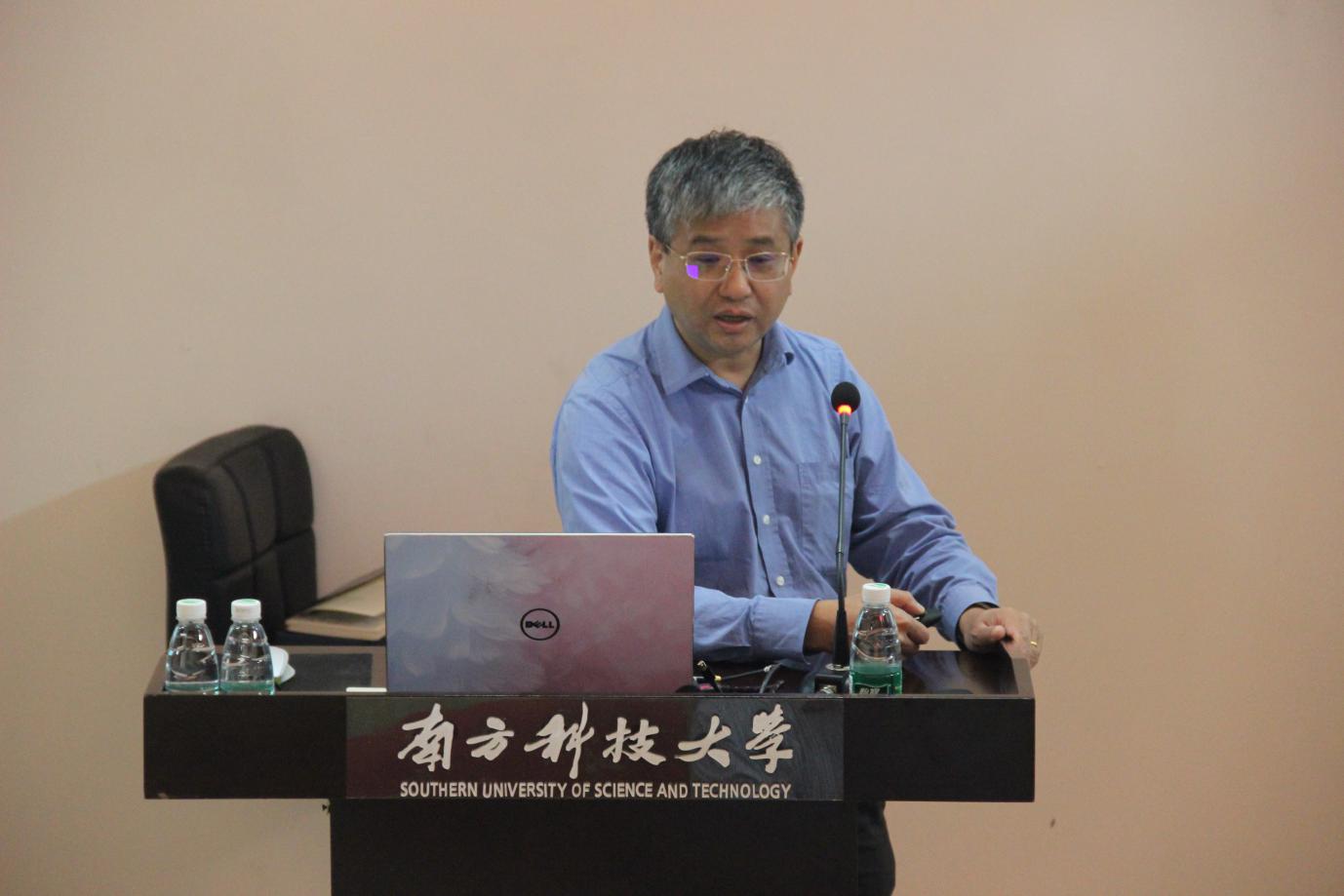
Professor He Heyong
Lecture Review
Professor He Heyong mainly delivered an in-depth and meticulous lecture about the research on carbon dioxide reforming of methane, catalysts for n-butane isomerization and the characterization of acid-base properties of oxides.
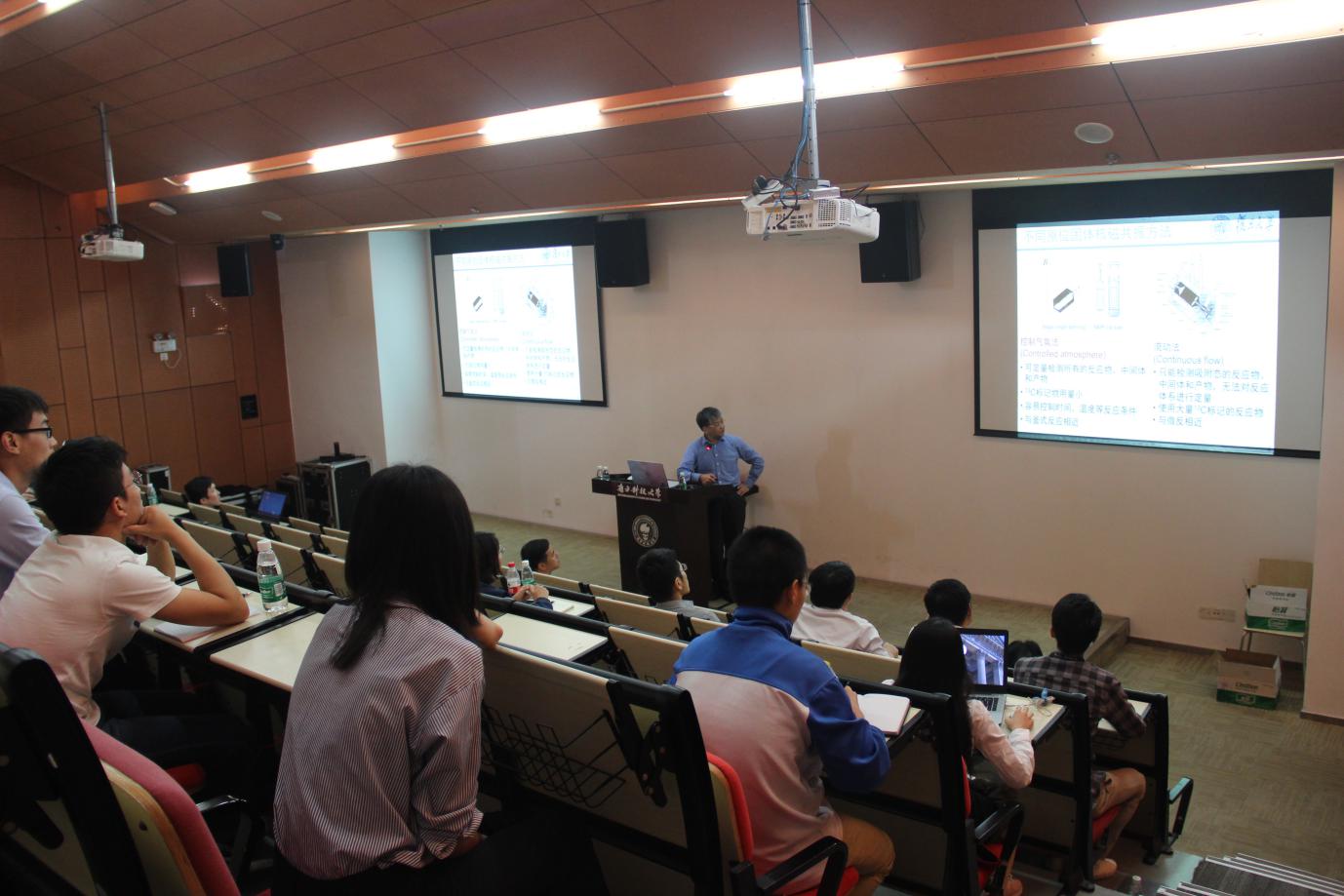
The lecture scene
In the lecture, Professor He Heyong made an in-depth illustration on solid-state NMR, an important characterization technology in the study of heterogeneous catalysis. As its spectral peak can be easily attributed and quantified, it can provide unique information for the study of the reaction mechanism of heterogeneous catalysis and the acidity of solid catalysts. Professor He said, his research team studied the carbon dioxide reforming of methane through solid-state nuclear magnetic resonance, and defined the structure of the intermediates activated by methane, and figured out the relationship between the reaction mechanism of n-butane isomerization and the acidity of the catalyst by studying the acidity and reaction performance of catalyst, which provided useful information for the design of catalysts. In addition, by looking into the acid-base properties of oxides and the reaction of acetone gas-phase condensation, they proposed a method for the characterization of acid-base probe molecules, which can better reflect the acid-base properties of catalysts in reactions compared with the conventional characterization method of single probe molecule.
Based on the above research, Professor He had come to three conclusions: 1. In the carbon dioxide reforming of methane that uses Rh based and Ni based catalysts, methane produces the intermediates of CH3O and CH2O mainly through CH3 and CH2 respectively; 2. The reaction principle of n-butane isomerization is related to the acidity of catalysts. The stronger the acidity is, the better the reaction mechanism of a single molecule is, and the lower the activation energy is. 3. As the characterization method of co-adsorption shares many similarities with the in-situ reaction of acid and alkali under the influence of catalysts, the result can better reflect acid-base properties of catalysts in actual reactions.
Interaction Part
Towards the end of the lecture, Professor He answered the questions that teachers and students asked enthusiastically and gave some advises.
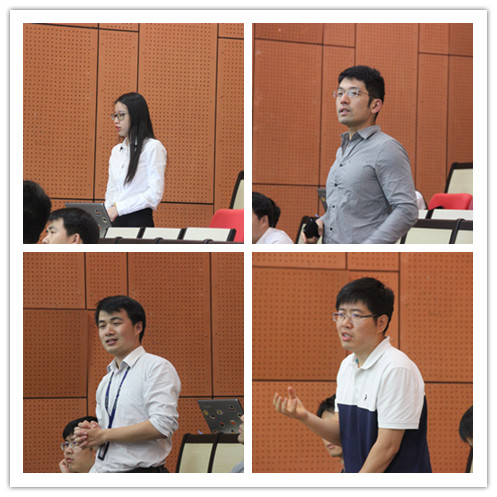
Q&A section
After the lecture, Professor Zheng Zhiping, Head of the Department of Chemistry, presented Professor He Heyong with a Certificate of Honor and a special souvenir. At last, all teachers took a group photo. The lecture came to successful conclusion.
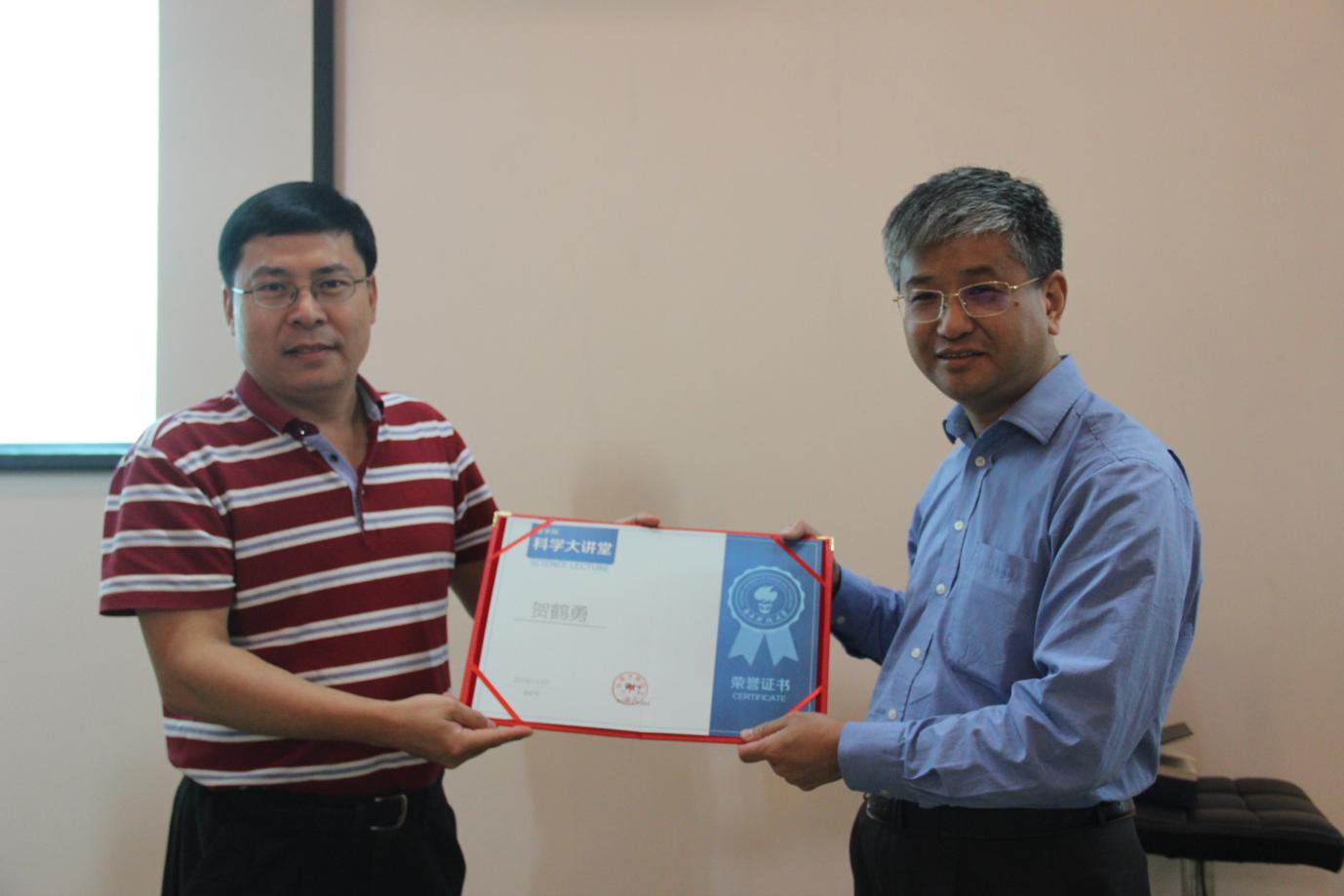
Prof. Zheng Zhiping and Prof. He Heyong
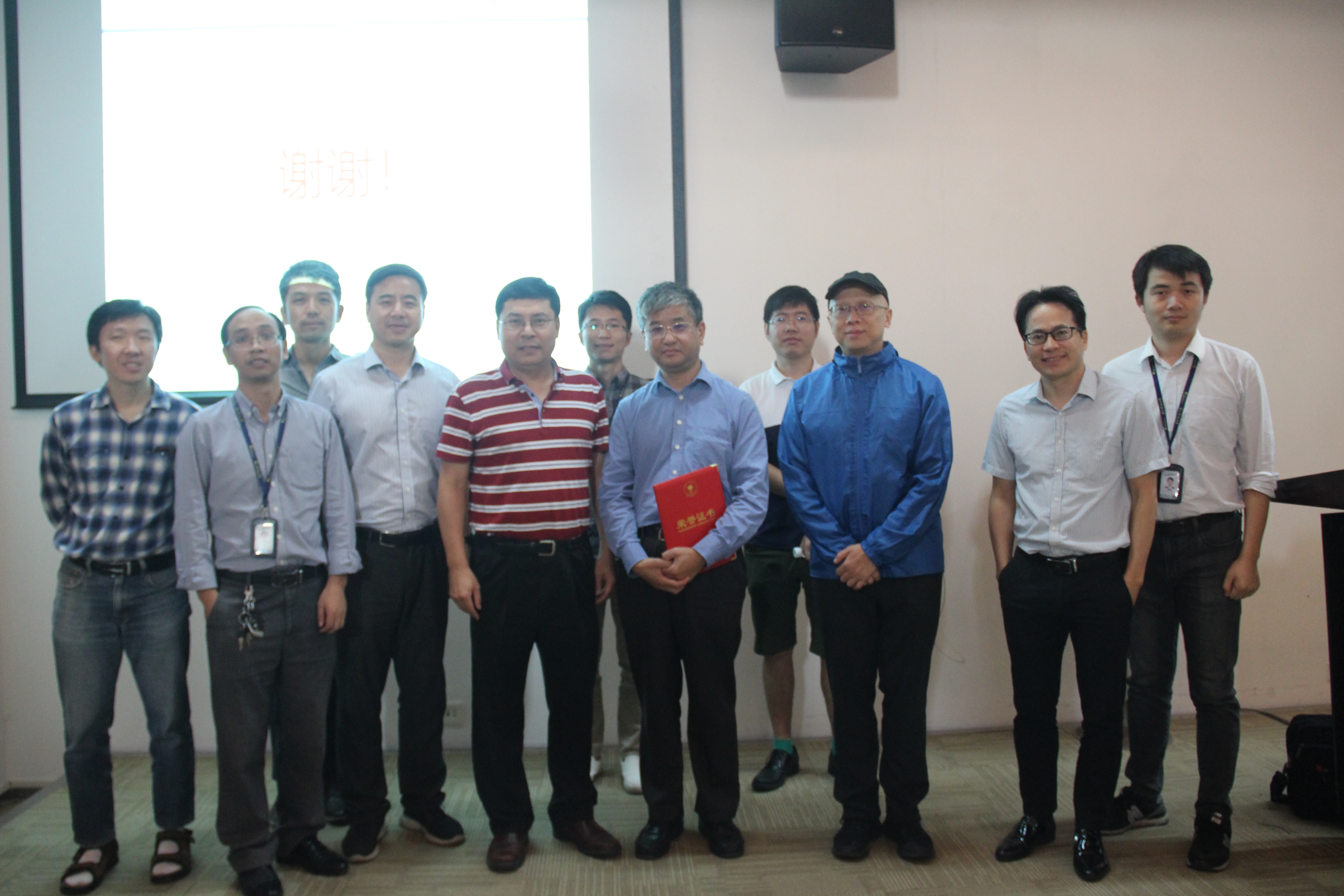
Group photo of SUSTech faculty with Prof. He Heyong




